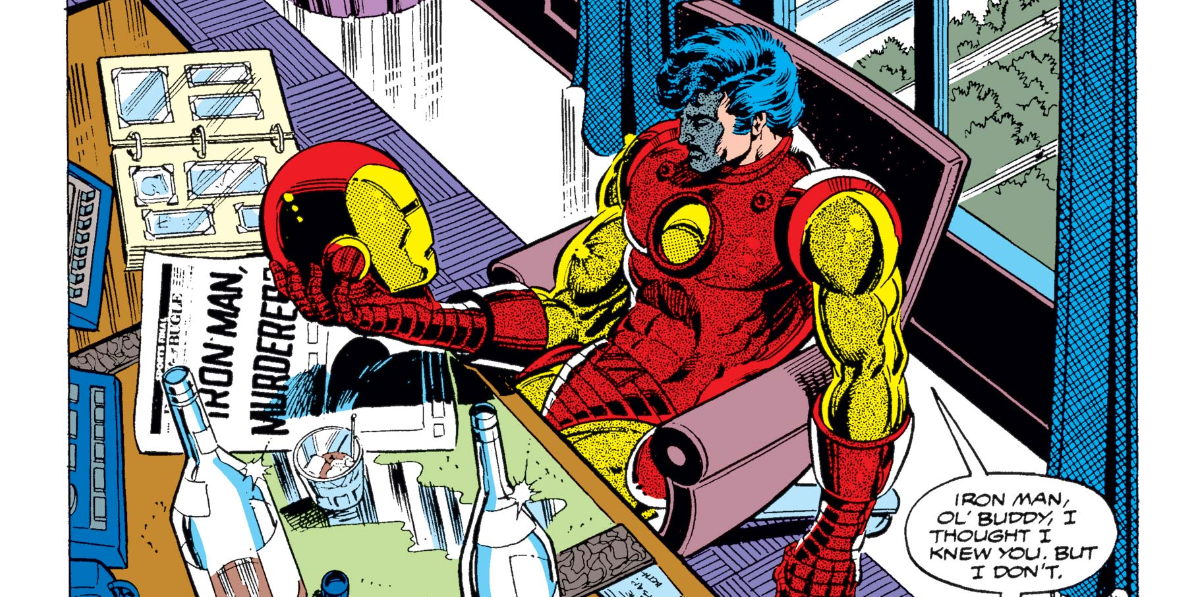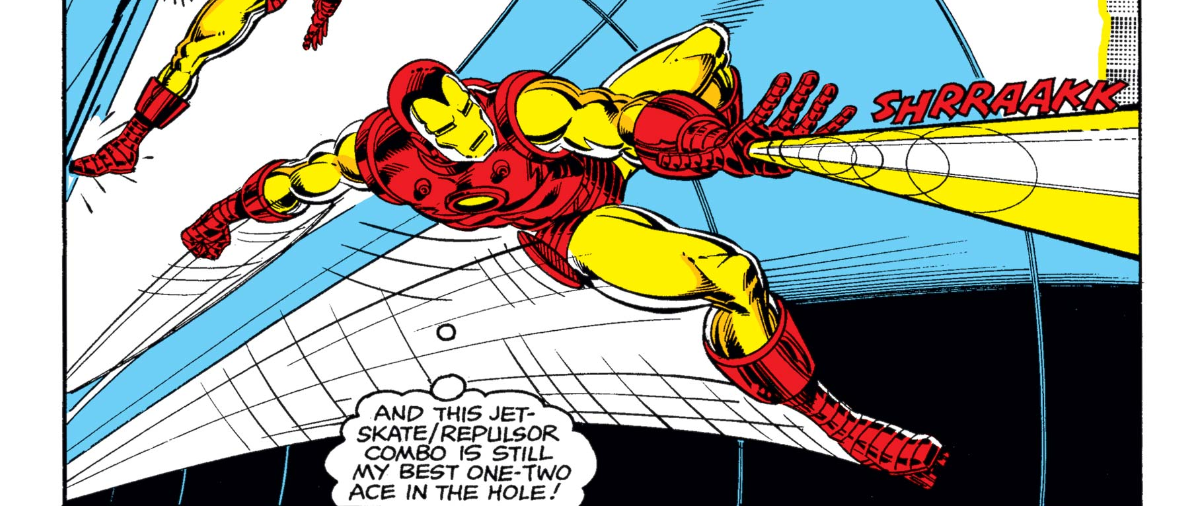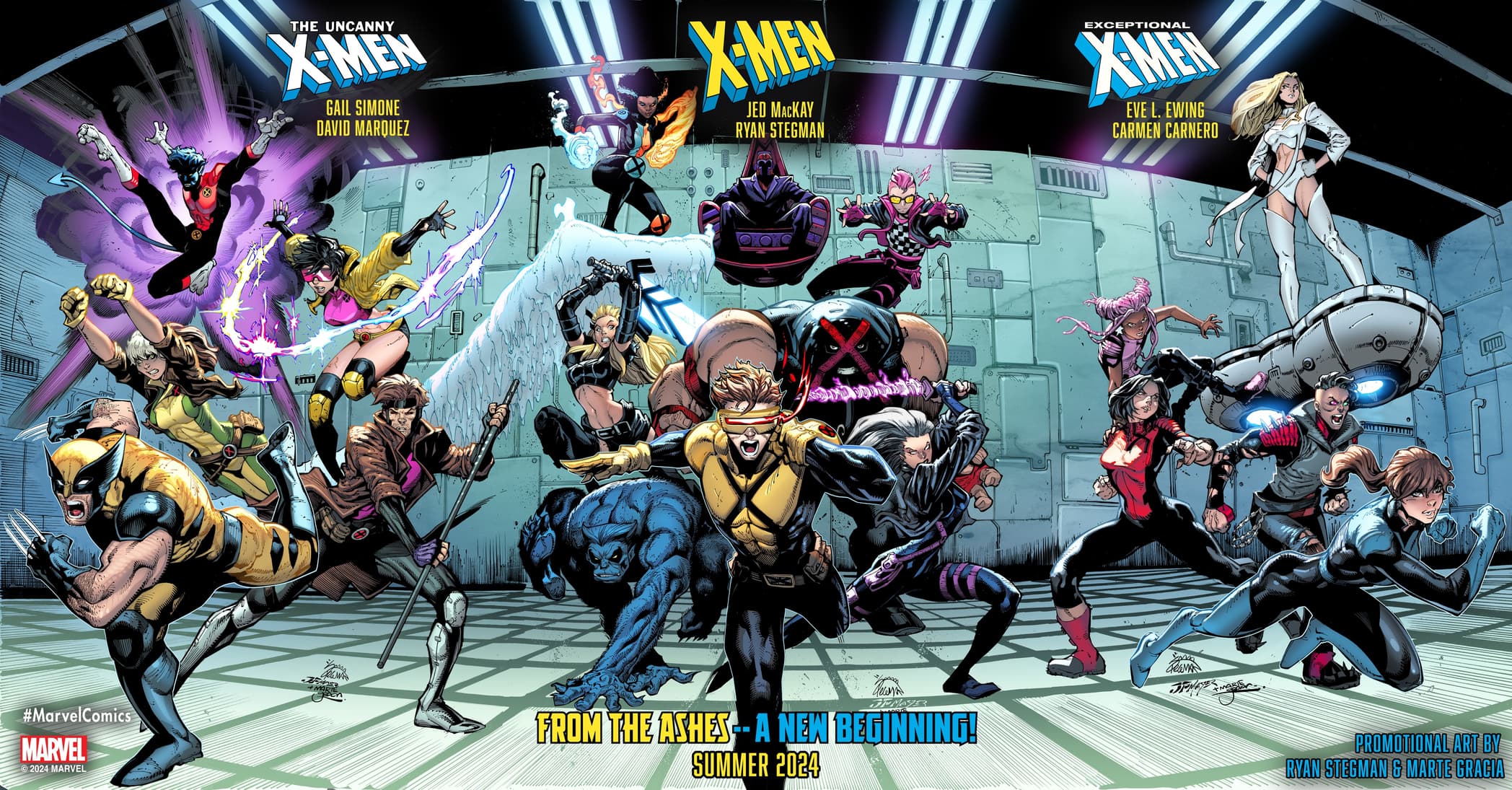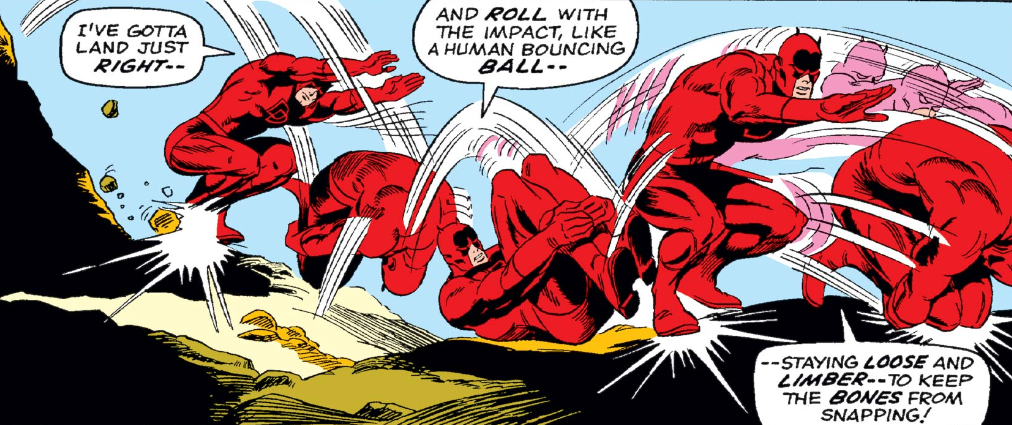Demon in a Bottle, or The Power of Iron Man
Marvel Graphic Novel Collection

Nine issues from Iron Man’s ongoing comic in the late 1970s have become the go-to recommendation for the character almost ever since. Even some of the most avid comic readers would be hard-pressed to name many more Iron Man stories, especially excluding Avengers titles. As the arc has come to be known, Demon in a Bottle has cemented itself as a definition of Tony Stark/Iron Man and is essential for developing an understanding of the character.
Commentary
The Demon in a Bottle arc, like many storylines of the period, is not initially branded as an insular story. Instead, it is a retroactive selection of individual issues from the ongoing Iron Man series. Two ongoing problems facing Iron Man persist through the issues and tie the arc together: alcohol and acquisitions. At the start of the storyline, the reader learns that SHIELD is attempting to buy out Star Industries' stock to control the company. This runs in the background and feeds into many of Tony's decisions down the line. The other throughline is Tony’s drinking, which slowly develops into some form of substance abuse. While the drinking is prominently displayed and commented on by many characters, it becomes a real problem quite slowly, in an effective attempt at building tension over many comics.
After learning from Nick Fury that his company is at risk, Iron Man immediately jumps into a team-up with Namor to clear his head. This tight story tells the well-known tale of American companies utilizing the might of our military to decimate the environment and homes of others. These issues are intelligent and funny and tug on the reader’s heartstrings with the final moments of a man watching the island he loves, the place where his wife is buried, explode in a silent eruption of light, all because there was a buck to be made. It’s a pertinent and poignant lesson, but both Iron Man and, arguably, the comic seem not to learn much from the events.
Over the ocean, on his flight back home, Iron Man reminisces on his origins. This telling of the hero’s beginnings places him in Vietnam as Tony attempts to sell and refine weapons for the US invasion. While in the field, our protagonist stumbles upon a landmine, takes shrapnel to the heart, and is captured. It’s unclear if some local gang grabs Iron Man or if it is meant to be the leaders of Vietnam; either way, he is a prisoner to some racist caricatures of Vietnamese communists. The trope of evil foreigners resisting the glory of the US empire is similarly employed in the 2008 Iron Man movie as well.
Along the same lines as the film, the story of an old professor helping Tony construct the armor and escape at the cost of the older man’s life plays out. These scenes work narratively and emotionally despite any less-than-savory characterizations. Interestingly, Iron Man uses the fact that the shrapnel injures him and confines him (at the time) to the iron suit as justification for his killing and rampaging against the communists. There is no reckoning from Tony or the comic with the fact that he came to the country in an attempt to distribute machines to kill in the first place. It almost gives the feeling that Tony should realize this, but ultimately, it is unclear if the protagonist is meant to be seen as clueless or ingenious.
Iron Man’s suit slightly malfunctions at various points in the story, and he loses control for small instances. In another feat of tension building, these mishaps do not cause significant harm as much as they create intrigue and reflect an overall theme. The loss of control over the suit ramps up when it is revealed that the malfunctions are being orchestrated by a menacing figure known as Hammer. His plans come to fruition when Iron Man poses with his hand on the back of an ambassador at the UN, and Hammer instructs the hero’s repulsor ray to activate, killing the ambassador.
Luckily for Iron Man, the police believe his innocence. However, neither they nor he take a moment to remark on the fact that Tony essentially placed the barrel of a gun he loaded himself against the back of a UN ambassador and was surprised that someone else pulled the trigger.
Instead of introspection, Tony sets out to find the mysterious Hammer. He first stops by the Avengers HQ so that Captain America can perform his patriotic duty of training an irresponsible, alleged murderer in combat to be just dangerous enough to cause some actual harm.
In an amusing sequence, armorless Iron Man tracks down Hammer, who is holed up in a floating compound with many C and D-tier villains Tony had faced in the past. The action climaxes in a scene where Tony regains his suit and routinely takes down the opposition. He returns home but is distraught when it becomes clear the label of the dangerous murderer is not going to go away quickly.
As he spirals, Tony leans harder on the bottle and begins to threaten his personal relationships with his girlfriend Beth and Jarvis, the Avenger’s butler. Beth tells Tony the story of her ex-husband, who became so invested in his job that he became dependent on pills to make it through the day and eventually lost his life. Through her support and some dramatic restraint, Tony is able to rise above the immediate grip of his alcoholism. He makes up with Jarvis but finds out that his mistreatment of the butler necessitated selling his few stocks in Stark Industries, which were snatched by SHIELD, seemingly sealing the company’s ownership fate away from Tony.
The book ends with Tony struggling not to fall back on the bottle, but he succeeds with the support and empathy of Jarvis and Beth. As the story wraps, Beth and Tony drive into the sunset, with the latter remarking on how he is ready to dive back into the business world and keep fighting for his company.

Pacing
One of the arc's standouts is the pacing's ability to build tension specifically. The apparent point is Tony’s drinking and its subtle role. The reader sees minimal issues arise from alcohol initially, with Iron Man overcoming any obstacles it produces. The emphasis is placed on the stressful events that push Tony to drink, and time is taken to have other characters comment on the smell and sight of the alcohol. As the drinking increases in quantity, the effects become more intense, and the bottom falls out from underneath the hero. The build is gripping, and the payoff is effective, but the ending is not entirely successful in rounding out the story.
Control
Demon in a Bottle is a story that showcases the concept of control. The opening issues illustrate a dramatic failure by US oil and military groups to liberate the resources of a foreign island for their own use. The flashback is a tale of Tony and the military trying to control others in Vietnam, where he faces immediate consequences. Instead of learning a lesson, he manages to regain a new form of control through his armor. In the back half of the arc, Tony fights against Hammer, wrenching control of both the Iron Man suit and the hero’s public perception. This culminates with Tony’s struggle against alcohol and the rampant collapsing of his life. He overcomes the pull of alcohol temporarily and in a very limited comic-book fashion, but decides to dive back directly into his business realm.

Coming to Conclusions
Tony and the series as a whole come away from the arc, understanding that alcohol was the real problem all along. This is almost unarguably the case for the final issue, but the rest of the arc is poised to tell a different, more profound lesson.
The destruction of the island, Iron Man’s origins in Vietnam, and the UN incident are all examples of attempts to grasp and wield violent power. Tony watches an entire island literally explode as an effect of American intervention, immediately reflects on his time in Vietnam, and fails to draw any throughline. After that, his suit, which is designed to attack people, goes one step further and kills a man due to a sinister entity leveraging Tony’s own negligence, but he doesn’t hesitate for a second in reassigning the blame, and neither does anyone around him.
There is a pronounced case built here that manufacturing and distributing weapons of war, no matter how creative, is in and of itself uncontrollable and detrimental to humanity at large. This is mirrored in Tony’s fight with alcohol directly, but the book and character fail to finish the thought at the end. Beth even gives Tony a detailed account of how substance abuse arises from external factors as much as internal, with the story of her late husband, but neither she nor he seems too concerned with that by the time the issue wraps.
Comics are frequently purposefully simplistic, censored, and easy to over-analyze. However, this arc explicitly brings up the issues of imperialism, interventionism, weapon distribution, and alcoholism. During the narrative, these ideas are balanced and explored relatively thoughtfully, but the ending betrays the immaturity of the medium. Alcoholism is portrayed as the giant evil and as a mature theme that is almost breaking its way into comics. While it is a heavy topic and ultimately is handled well enough, juxtaposing the disease with themes of evil on a grander scale diminishes the story of personal struggle.
Tony and the comic come away with the feeling that alcohol was the root of his problems, though the book gives the reader ample knowledge to dispute this. In the most favorable light, the story presents a fundamentally flawed character in Tony, who is trying to be a hero despite his inconsistencies. The points where Tony struggles to stop crime and has to give up and dejectedly fly away are perfect examples of this. Frequently, there are shifts back to the good guy versus bad guy dynamic that is the foundation of superhero comics and ultimately undermines the book's message to some extent. Demon in a Bottle does not all land perfectly, but the arc does raise compelling questions and urges the reader to take and think about the book more seriously than many of its contemporaries, for better or worse.
Citation Station
- Iron Man #120-128, 1978-79, David Michelinie (writer), Bob Layton (writer, artist), John Romita Jr. (artist), Carmine Infantino (artist), Ben Sean (colorist), John Costanza (letterer), Carl Gafford (colorist), Bob Sharen (colorist), Irving Watanabe (letterer), Bob McLeod (artist), Bob Wiacek (artist), Jim Novak (letterer), Joe Rosen (letterer).



